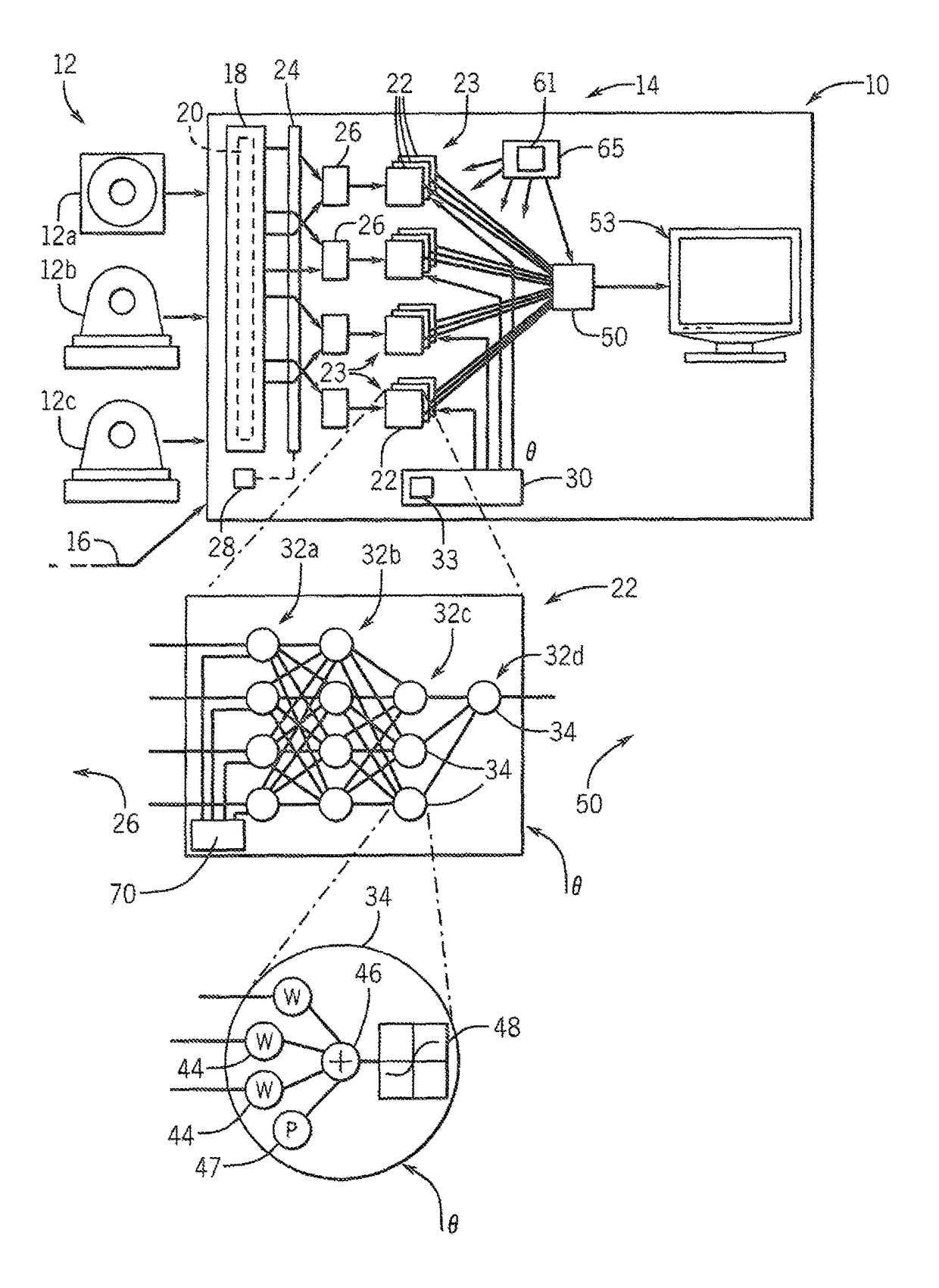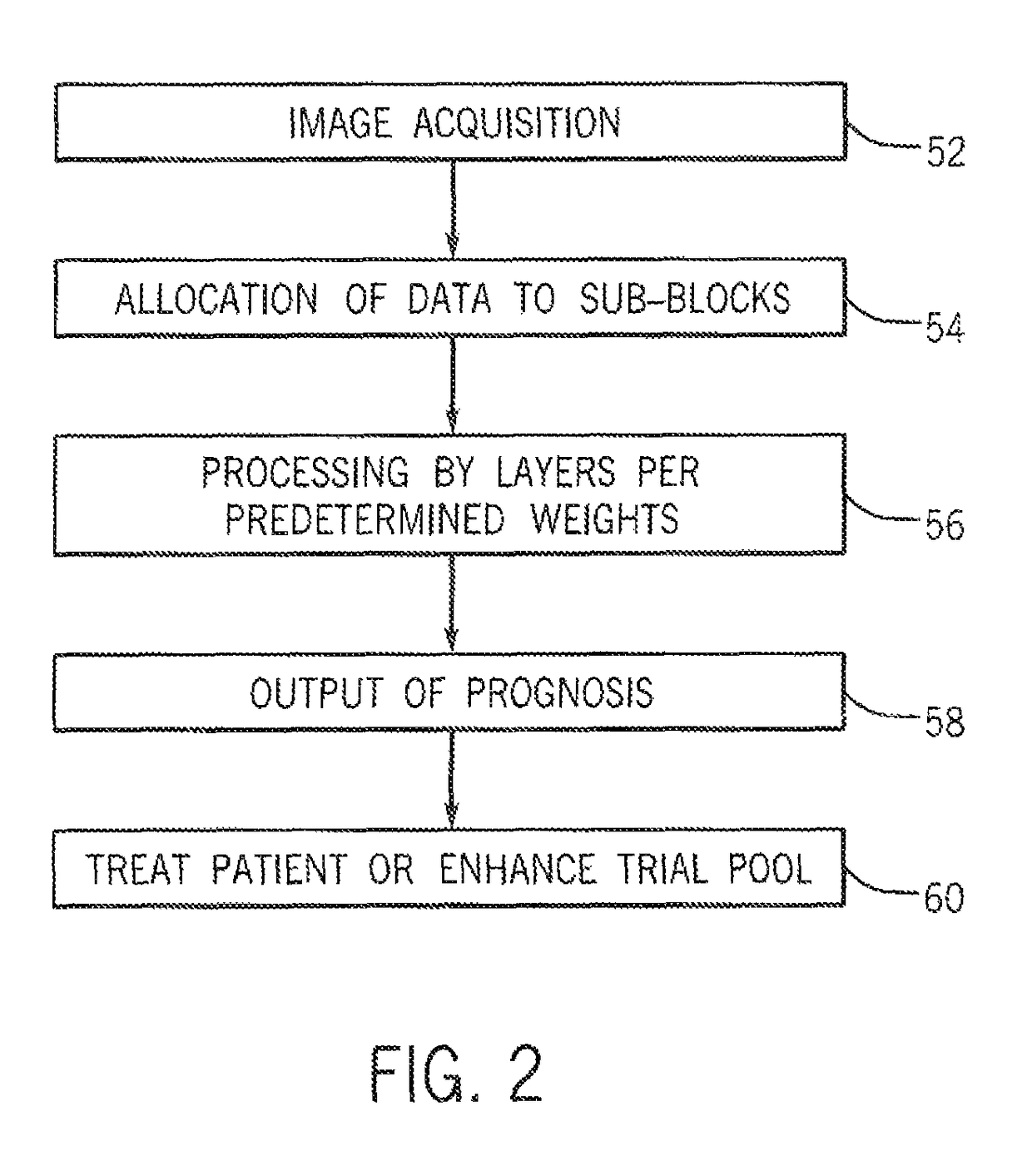Medical imaging system providing disease prognosis
a medical imaging and disease technology, applied in the field of medical imaging systems, can solve problems such as mismatch between the number of dimensions of clinical data (the total number of clinical data, the number of samples (for example, patients) in clinical trials) and the number of dimensions of clinical data
- Summary
- Abstract
- Description
- Claims
- Application Information
AI Technical Summary
Benefits of technology
Problems solved by technology
Method used
Image
Examples
Embodiment Construction
Hardware Elements
[0038]Referring now to FIG. 1, a medical imaging system 10 may employ one or more medical imaging sources 12 providing data to a processing engine 14. In the example of a medical imaging system 10 for diagnosing Alzheimer's disease, three medical imaging sources 12 may be employed including: an magnetic resonance imaging (MRI) machine 12a, a positron emission tomography (PET) machine 12b for providing amyloid data and a PET machine 12c for providing Fludeoxyglucose (FDG) data. The medical imaging system 10 may also accept non-image data sources 16 such as degree of cognitive impairment and parental family history.
[0039]A set of data 20 collected from these medical imaging sources 12 and non-image data sources 16 may be provided to the processing engine 14 to be stored in electronic memory 18. Generally this set of data 20 has dimensions ν much greater than the number of samples n.
[0040]The set of data 20 is mapped to a set of stacked de-noising autoencoders 22 accor...
PUM
 Login to View More
Login to View More Abstract
Description
Claims
Application Information
 Login to View More
Login to View More - R&D
- Intellectual Property
- Life Sciences
- Materials
- Tech Scout
- Unparalleled Data Quality
- Higher Quality Content
- 60% Fewer Hallucinations
Browse by: Latest US Patents, China's latest patents, Technical Efficacy Thesaurus, Application Domain, Technology Topic, Popular Technical Reports.
© 2025 PatSnap. All rights reserved.Legal|Privacy policy|Modern Slavery Act Transparency Statement|Sitemap|About US| Contact US: help@patsnap.com



